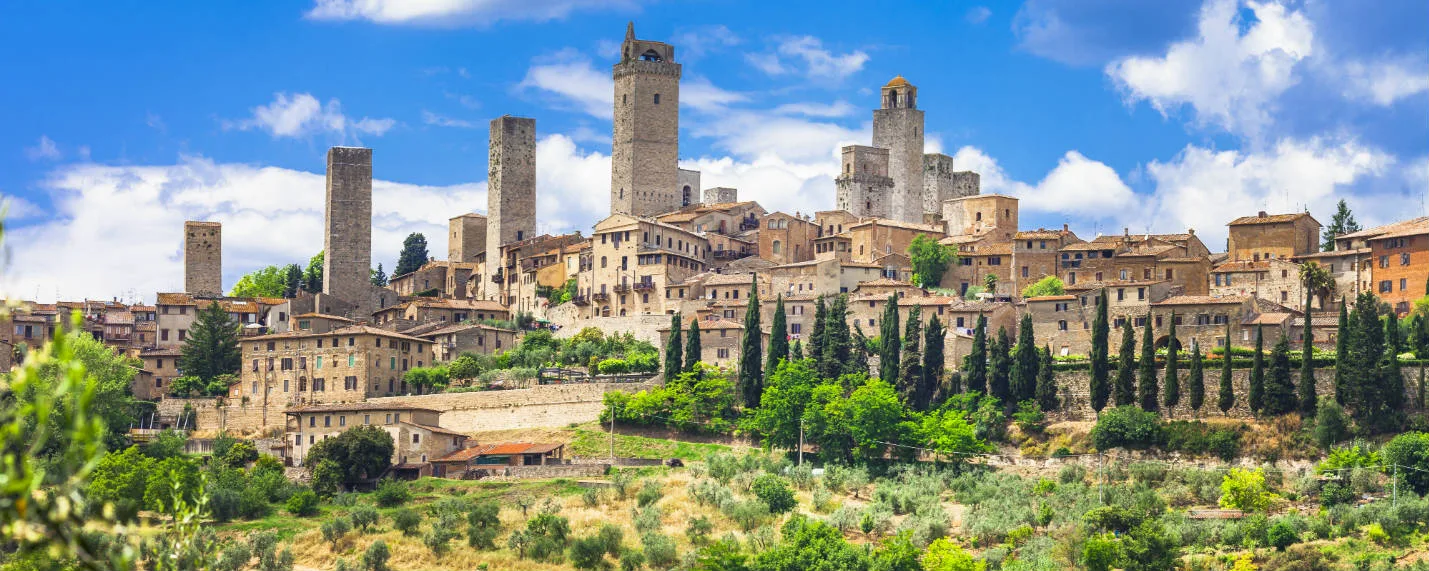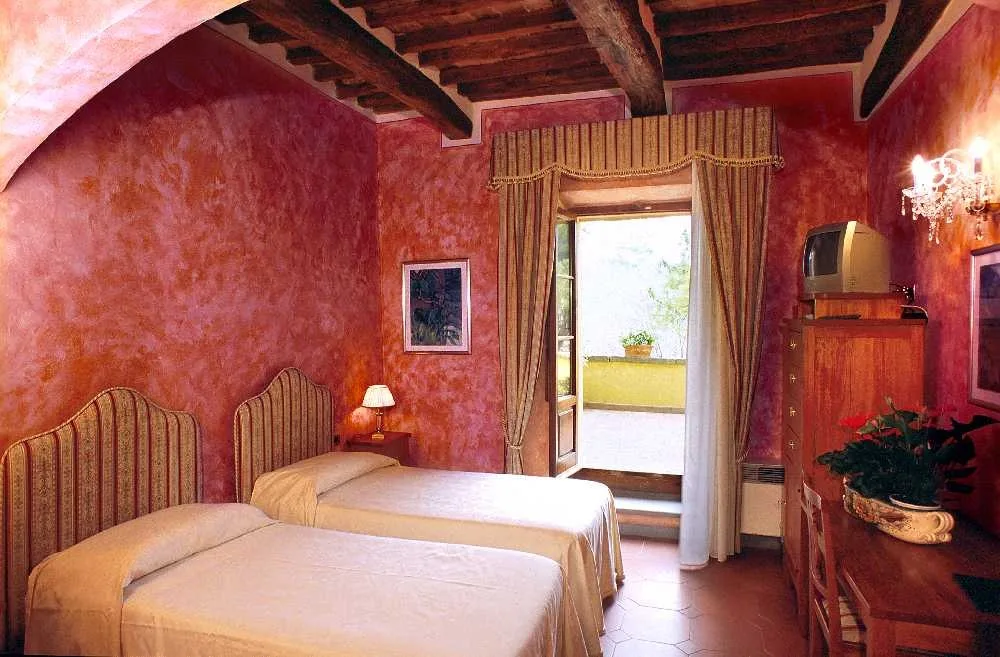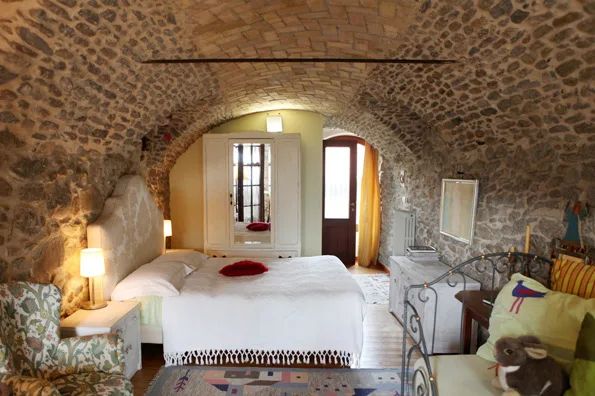The Town Hall, one of the most interesting monuments of San Gimignano, was built between 1289 and 1298 on the remains of a pre-existing building. The successive extensions of the fourteenth and fifteenth centuries progressively defined the space of the inner courtyard, later frescoed with coats of arms of the characters who had held public office in the context of the City. The main building was used both as a residence of the Podestà and for public council meetings.
On the first floor there is the Sala del Consiglio, also known as Sala Dante, in memory of the visit that the Florentine poet in 1299 made in San Gimignano as ambassador of the Guelph league. The hall features a famous cycle of frescoes from the late 13th century (around 1290) depicting knights’ tournaments and hunting scenes dedicated to Charles of Anjou, presented on the throne in front of the entrance, while some of the characters pay tribute to him the gift of the falcon. The paintings are attributed to the Florentine painter Azzo di Masetto. On the right wall is painted the Madonna in Majesty by Lippo Memmi performed by the painter in 1317. Lippo is a painter of the Sienese school, active in the first half of the fourteenth century, follower of Simone Martini.
The fresco, in fact, is inspired by the Majesty painted by Simone in Palazzo Pubblico in Siena two years earlier in 1315. On the second floor is the Camera del Podestà, completely frescoed with a singular narration that presents scenes of love, as well as a series of moral exempla addressed to the Podestà, who was not to give in to corruption. The frescoes, made in the early fourteenth century, are attributed to Memmo di Filippuccio, father of Lippo.
The visit continues with the Pinacoteca, where you can follow the fundamental moments of the San Gimignano artistic history; from the Florentine presences (Coppo di Marcovaldo, Azzo di Masetto) and Sienese (Rinaldo) of the second half of the thirteenth century, to the great Sienese season of the second half of the fourteenth century (Memmo di Filippuccio, Lippo Memmi, Niccolò di Ser Sozzo); from the alternation between Sienese and Florentines between the fourteenth and fifteenth centuries (Taddeo di Bartolo, Lorenzo di Niccolò, “Maestro of 1419”), the definitive prevailing of the Florentines (Filippino Lippi, Benozzo Gozzoli, Benedetto da Maiano) who contributed to the Renaissance renewal of San Gimignano, to end with the large altarpiece by Pinturicchio, painted in 1511.
Leaving the Museum, the Cortile frescoed with the coats of arms of the podestàs, reserves as a last surprise a fresco of Sodoma (early 16th century) and the ancient bell of 1328, recently restored.





